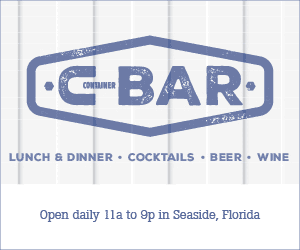The South Walton Community Council is proposing the following a clarification be made to Walton County Land Development Code definition of a Planned Unit Development (PUD). This will be heard at a Planning Commission Hearing on Thursday, February 9, 2023, at 4pm at the Freeport Commons, 842 State Highway 20E, Suite 118, Freeport, FL
To support this clarification to be incorporated into the Land Development Code you may attend the hearing and/or email owekaren@co.walton.fl.us. In the subject line, please use PUD Clarification for LDC
What is a PUD?
What qualifies as a PUD (Planned Unit Development) is defined in the Comprehensive Plan and Land Development Code (LDC), but the requirements are somewhat ambiguous. The Planning Commission recently questioned whether a number of PUD applications were legitimate, and at the most recent meeting (01/12/23) voted to place the issue on the agenda for the next meeting (02/09/23). The following outline seeks to clarify what SWCC believes are the essential elements that need to be incorporated into LDC requirements.
The highlighted items below are the important concepts that are not in the current code:
PUD must result in a design that could not be accomplished with standard zoning (cookie-cutter developments do not qualify for a PUD)
Minimum 5 acres (No current minimum)
No shortcuts on detailed PUD and DO hearings (currently asking for and getting minor development deviations)
Purpose and Intent
It is the intent of this chapter to establish a planned unit development (PUD) overlay district in an effort to:
Encourage developers to exercise greater ingenuity and imagination in the planning and development or redevelopment of tracts of land under unified control than generally is possible under the more traditional zoning regulations;
To promote the enhancement of housing, employment, shopping, traffic circulation, recreational opportunities for the people of the County;
Allow a diversification of uses, structures and open area in a manner compatible with both the existing and approved development of land surrounding and abutting the PUD site;
Provide a means for land to be used more efficiently, and for utilization of smaller networks of utilities and streets;
To promote the conservation of natural features and resources by means of retaining the natural amenities of land and encouraging scenic and functional open space; and;
Give the developer reasonable assurance of approval of a PUD application before the applicant expends complete design monies, while providing the county with assurances that the PUD will be developed according to approved specifications.
Source: Bay County
“PUDs are actually one of the only ways we can have new urban design principals and have mixed use, walkable developments that work.”
Source: Kristen Shell (2018 email)
Definition
Planned unit development (PUD) means a tract of land which is developed as a unit under single ownership or control and which is planned and developed in a single operation or within a proposed period of time by a series of scheduled development phases according to an officially approved final PUD development plan, which does not necessarily correspond to the property development and use regulations of the conventional zoning districts; but which permits flexibility in building siting and mixtures of housing types and land uses, and encourages the utilization of usable open space and the maintenance of significant natural features. Planned Unit Development (PUD) is both a type of development as well as a regulatory process for which design standard deviations from the requirements in the Land Development Code may be considered, at the discretion of the Board of County Commissioners, in conjunction with evidence of a public benefit. A PUD is a designed grouping of varied and compatible land uses, such as housing, recreation, commercial centers, and industrial parks, all within one contained development or subdivision.
Source: Bay County
Demonstration of Applicability
A proposed Planned Unit Development must demonstrate the following:
Benefits
Granting of the PUD will result in a recognized and substantial benefit to the ultimate users of the project and to the community where such benefit would otherwise be unfeasible or unlikely to be achieved.
Unique design
Greater ingenuity and imagination in the planning and development than generally is possible under the more traditional zoning regulations.
Minimum size
A PUD must be at least five (5) acres in area.
Mixed use
Encourage a mixed-use design with pedestrian-oriented development, and interconnectivity among uses, sensitivity to the natural environment and natural features, and the coordination of development with public facilities.
Compatibility
It is planned to harmonize with any existing or proposed development in the area surrounding the project site.
Preservation
It is an effective and unified treatment of the development possibilities on the project site, and the development plan makes appropriate provision for the preservation of floodplains, wetlands, streams and stream banks, hillsides, and other natural resource areas.
Deviations
The PUD may depart from the strict conformance with the Land Development Code to the extent specified in the concept and/or preliminary plan and documents authorizing the PUD. These deviations/departures shall result in exceptional amenities, design excellence, and other objectives as defined in the Purpose and Intent section above.
Deviations related to review and approval procedures are not permitted.
To support this clarification to be incorporated into the Land Development Code you may attend the hearing and/or email owekaren@co.walton.fl.us. In the subject line, please use PUD Clarification for LDC
What is a PUD?
What qualifies as a PUD (Planned Unit Development) is defined in the Comprehensive Plan and Land Development Code (LDC), but the requirements are somewhat ambiguous. The Planning Commission recently questioned whether a number of PUD applications were legitimate, and at the most recent meeting (01/12/23) voted to place the issue on the agenda for the next meeting (02/09/23). The following outline seeks to clarify what SWCC believes are the essential elements that need to be incorporated into LDC requirements.
The highlighted items below are the important concepts that are not in the current code:
PUD must result in a design that could not be accomplished with standard zoning (cookie-cutter developments do not qualify for a PUD)
Minimum 5 acres (No current minimum)
No shortcuts on detailed PUD and DO hearings (currently asking for and getting minor development deviations)
Purpose and Intent
It is the intent of this chapter to establish a planned unit development (PUD) overlay district in an effort to:
Encourage developers to exercise greater ingenuity and imagination in the planning and development or redevelopment of tracts of land under unified control than generally is possible under the more traditional zoning regulations;
To promote the enhancement of housing, employment, shopping, traffic circulation, recreational opportunities for the people of the County;
Allow a diversification of uses, structures and open area in a manner compatible with both the existing and approved development of land surrounding and abutting the PUD site;
Provide a means for land to be used more efficiently, and for utilization of smaller networks of utilities and streets;
To promote the conservation of natural features and resources by means of retaining the natural amenities of land and encouraging scenic and functional open space; and;
Give the developer reasonable assurance of approval of a PUD application before the applicant expends complete design monies, while providing the county with assurances that the PUD will be developed according to approved specifications.
Source: Bay County
“PUDs are actually one of the only ways we can have new urban design principals and have mixed use, walkable developments that work.”
Source: Kristen Shell (2018 email)
Definition
Planned unit development (PUD) means a tract of land which is developed as a unit under single ownership or control and which is planned and developed in a single operation or within a proposed period of time by a series of scheduled development phases according to an officially approved final PUD development plan, which does not necessarily correspond to the property development and use regulations of the conventional zoning districts; but which permits flexibility in building siting and mixtures of housing types and land uses, and encourages the utilization of usable open space and the maintenance of significant natural features. Planned Unit Development (PUD) is both a type of development as well as a regulatory process for which design standard deviations from the requirements in the Land Development Code may be considered, at the discretion of the Board of County Commissioners, in conjunction with evidence of a public benefit. A PUD is a designed grouping of varied and compatible land uses, such as housing, recreation, commercial centers, and industrial parks, all within one contained development or subdivision.
Source: Bay County
Demonstration of Applicability
A proposed Planned Unit Development must demonstrate the following:
Benefits
Granting of the PUD will result in a recognized and substantial benefit to the ultimate users of the project and to the community where such benefit would otherwise be unfeasible or unlikely to be achieved.
Unique design
Greater ingenuity and imagination in the planning and development than generally is possible under the more traditional zoning regulations.
Minimum size
A PUD must be at least five (5) acres in area.
Mixed use
Encourage a mixed-use design with pedestrian-oriented development, and interconnectivity among uses, sensitivity to the natural environment and natural features, and the coordination of development with public facilities.
Compatibility
It is planned to harmonize with any existing or proposed development in the area surrounding the project site.
Preservation
It is an effective and unified treatment of the development possibilities on the project site, and the development plan makes appropriate provision for the preservation of floodplains, wetlands, streams and stream banks, hillsides, and other natural resource areas.
Deviations
The PUD may depart from the strict conformance with the Land Development Code to the extent specified in the concept and/or preliminary plan and documents authorizing the PUD. These deviations/departures shall result in exceptional amenities, design excellence, and other objectives as defined in the Purpose and Intent section above.
Deviations related to review and approval procedures are not permitted.
Last edited by a moderator:













